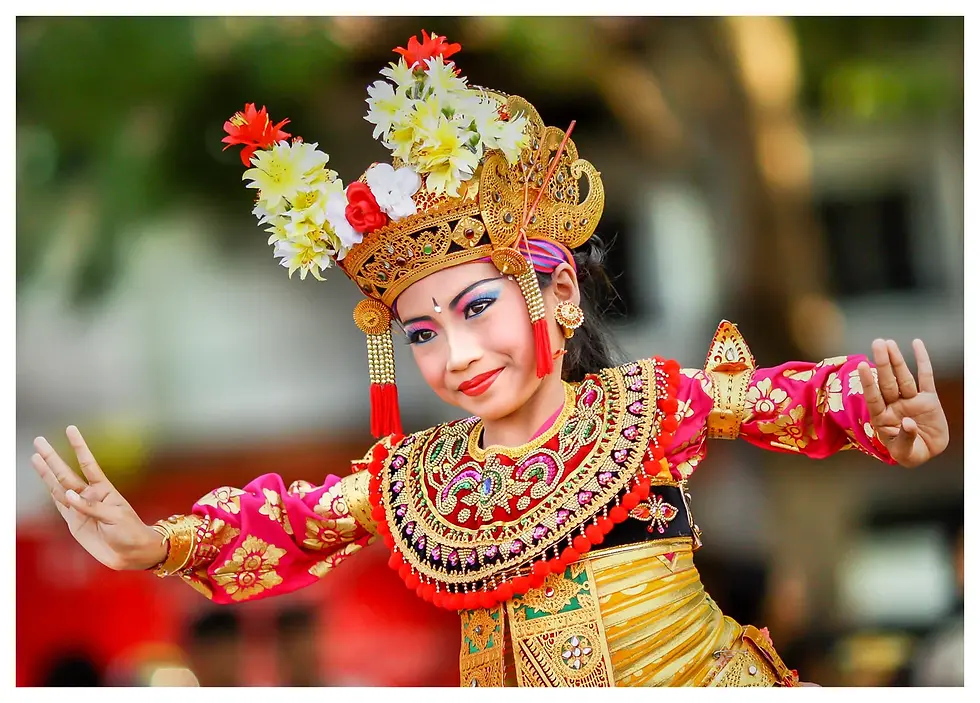Discovering Indonesia's Traditional Art Forms
- ai.lee
- Apr 13, 2023
- 2 min read
Explore the rich heritage and artistic expressions of the Indonesian archipelago
Indonesia's rich cultural history and diverse traditions are reflected in its many art forms, from intricate dance performances to delicate handicrafts.
These traditional art forms have been passed down through generations and continue to thrive in modern Indonesia.
In this blog post, we'll take a closer look at some of the most fascinating Indonesian art forms, revealing the beauty and creativity of the country's artistic heritage.

1. Traditional Dance and Theatre
Traditional dance and theatre play a significant role in Indonesian culture, often accompanied by music and storytelling.
1.1 Wayang Kulit (Shadow Puppet Theatre):
A centuries-old form of storytelling and entertainment, wayang kulit involves intricately crafted leather puppets manipulated by a skilled puppet master (dalang) who narrates stories from Hindu epics or local folklore.
1.2 Balinese Dance:
Known for its expressive gestures and intricate movements, Balinese dance is an integral part of Balinese culture, often performed during religious ceremonies, festivals, or social events.

1.3 Saman Dance (Aceh):
Originating from the Aceh province in Sumatra, the Saman dance is a mesmerizing group performance characterized by synchronized, rhythmic movements and vocal chanting.

2. Textiles and Handicrafts
Indonesia's diverse regions are known for their unique textiles and handicrafts, often reflecting local cultural heritage and craftsmanship.
2.1 Batik:
A UNESCO-listed intangible cultural heritage, batik is a traditional Indonesian textile art created by applying wax to fabric and then dyeing it, resulting in intricate patterns and vibrant colors.
2.1 Ikat Weaving:
Practiced in various regions of Indonesia, ikat weaving involves dyeing the threads with intricate patterns before they are woven into fabric, creating stunning textiles with unique designs.

2.2 Wood Carving:
Indonesia is renowned for its intricate wood carvings, with regions like Bali and Jepara in Central Java producing ornate furniture, sculptures, and masks using traditional techniques.
3. Traditional Music
Music plays an essential role in Indonesian culture, with various regions having their own unique instruments and musical styles.
3.1 Gamelan:
A traditional Indonesian ensemble, gamelan primarily consists of percussion instruments such as metallophones, xylophones, drums, and gongs, creating a distinct, hypnotic sound.
3.2 Angklung:
A traditional musical instrument from West Java, the angklung is made of bamboo tubes suspended in a frame, which produce a melodic sound when shaken.
3.3 Sasando:
Originating from the island of Rote in East Nusa Tenggara, the sasando is a unique stringed instrument featuring a bamboo tube surrounded by a lontar leaf resonator, creating a distinct, harp-like sound.

Conclusion:
Indonesia's traditional art forms are a testament to the country's rich cultural heritage and creativity.
By exploring these various artistic expressions, visitors can gain a deeper appreciation for the history, traditions, and craftsmanship that make Indonesia a vibrant and diverse nation.
Whether you're watching an enchanting dance performance, admiring intricate textiles, or listening to the mesmerizing sounds of traditional music, you'll be immersed in the beauty and richness of Indonesian culture.





Comments